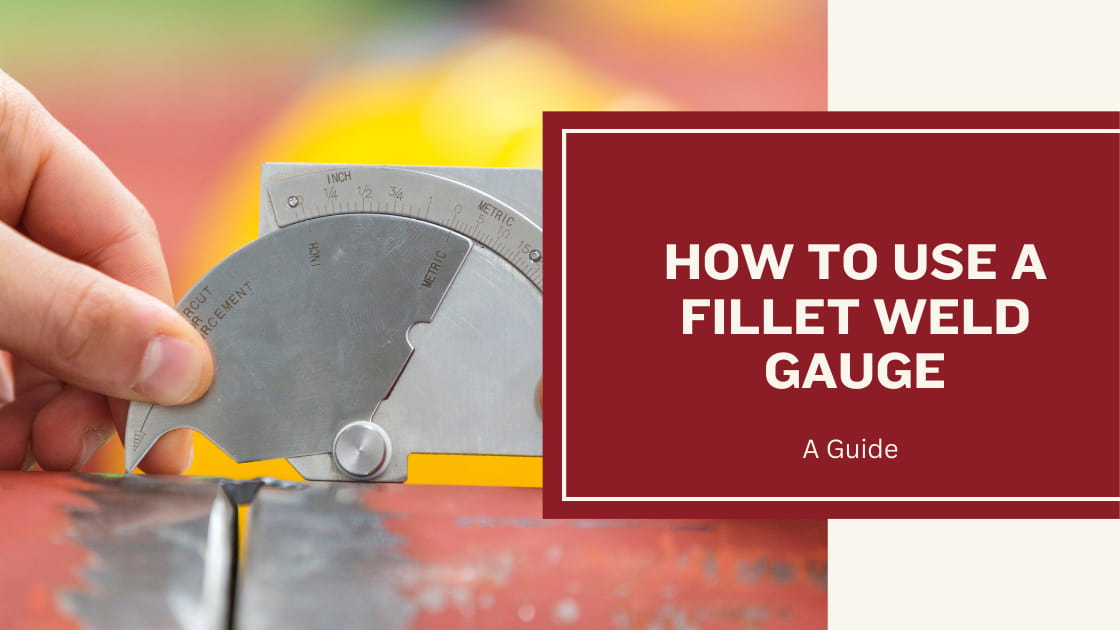The Role of Gauge Fillet Weld in Structural Integrity: What You Required to Know
The Role of Gauge Fillet Weld in Structural Integrity: What You Required to Know
Blog Article
Cutting-edge Methods to Fillet Weld Assessment and Testing: Enhancing Weld Quality and Conformity Specifications
In the world of welding, the quality and integrity of fillet welds play an essential function in guaranteeing the structural soundness and integrity of numerous industrial elements. With the constant drive for boosted performance and conformity with stringent standards, the exploration of innovative approaches to fillet weld evaluation and screening has actually come to be imperative. As markets develop, the typical methods may no more be sufficient in meeting the needs of modern-day welding applications (Gauge Fillet Weld). By embracing sophisticated innovations and methodologies, a new perspective of possibilities arises in the world of weld top quality analysis and adherence to compliance standards.
Advanced Non-Destructive Testing Techniques
Making use of modern innovations, progressed non-destructive screening techniques play a vital role in ensuring the integrity and top quality of fillet welds. These techniques, such as phased range ultrasonic screening (PAUT) and magnetic bit screening (MPT), offer thorough insights right into the weld's inner structure without creating any damages to the material. PAUT, as an example, uses numerous ultrasonic elements to evaluate the weld from different angles, offering a detailed visualization of potential flaws like lack of combination or splits.
By employing these advanced non-destructive testing methods, weld examiners can precisely examine the high quality of fillet welds, making sure conformity with market requirements and laws. The capability to spot imperfections early on not just boosts weld high quality but likewise avoids costly rework or failures in structural integrity, underlining the value of these cutting-edge screening methods in welding evaluations.
Robotics and Automation in Evaluation

The integration of robotics and automation has actually changed the assessment process for fillet welds, enhancing performance and precision in quality assessment. Robotics supply specific control and repeatability in evaluating welds, making certain trusted and consistent outcomes. Automated systems can be programmed to adhere to specific assessment paths, making certain extensive coverage of welds and minimizing the risk of human mistake.
Robot assessment systems geared up with advanced sensing units can find and measure weld functions with high accuracy, giving comprehensive information for evaluation. These systems can identify problems such as fractures, absence of combination, and porosity, enabling prompt restorative activities to be taken. In addition, robotics and automation permit for real-time data collection and analysis, offering prompt feedback to operators and assisting in fast decision-making procedures.
Furthermore, the use of robotics and automation in fillet weld evaluation enhances general efficiency by minimizing examination times and raising inspection throughput. By improving the assessment procedure, makers can ensure weld top quality and conformity criteria are fulfilled successfully, inevitably bring about set you back financial savings and boosted item high quality.
Using Expert System for Analysis
Expert system plays a critical role in enhancing the performance and precision of analysis in fillet weld inspection procedures. By using the power of AI, examiners can improve the evaluation of weld high quality and compliance standards, bring about a lot more reputable and accurate outcomes. AI algorithms can swiftly process substantial quantities of information from weld inspections, finding defects or incongruities that may be testing to relate to the nude eye. This advanced modern technology allows real-time monitoring of weld high quality, enabling prompt restorative actions to be taken if any kind of issues are discovered.
In addition, AI systems can discover from previous examination data, continuously boosting their ability to determine prospective issues and deviations in fillet welds. This adaptive discovering capacity enhances the overall high quality control process, reducing the likelihood of human mistake and making sure that welds satisfy the needed criteria. By incorporating artificial knowledge right into fillet weld evaluation, sectors can attain greater degrees of performance, uniformity, and conformity in their examination techniques.
Portable Tools for On-Site Inspection
Enhancing field inspection efficiency, the adoption of portable devices revolutionizes on-site assessment procedures for fillet welds. These devices supply adaptability and ease, allowing assessors to perform thorough examinations in various locations, consisting of remote or tough settings. Mobile tools such as ultrasonic testing tools, magnetic fragment assessment devices, and digital radiography systems provide real-time data and high-resolution imaging capacities, making it possible for quick decision-making and immediate feedback on weld top quality.
One substantial advantage of portable devices is their capability to improve inspection procedures, minimizing downtime and boosting total efficiency - Gauge Fillet Weld. Assessors can conveniently transfer these tools to different job sites, removing the requirement for carrying heavy equipment or elements to off-site centers. Furthermore, the portability of these devices promotes cost-effectiveness by minimizing transport costs and accelerating examination timelines
Additionally, making use of mobile tools for on-site examination promotes aggressive quality assurance measures, as examiners can promptly determine and address any this hyperlink kind of potential welding flaws or discrepancies. By including these innovative technologies right into on-site assessment techniques, welding professionals can make sure compliance with market criteria and enhance weld high quality, inevitably resulting in boosted structural stability and safety and security in different welding applications.
Combination of Information Management Equipment

Having actually enhanced on-site assessment procedures with the usage of mobile devices, the following phase includes the seamless assimilation of data monitoring systems to additionally improve efficiency and information analysis capacities in fillet weld evaluation and testing. By incorporating information monitoring systems into the examination process, companies can improve information collection, storage, and evaluation. This combination allows for real-time tracking of weld quality, instant recognition of flaws, and prompt decision-making to remedy any concerns that may develop throughout the assessment process.
The integration of information monitoring systems allows seamless communication between various stakeholders entailed in the examination procedure, cultivating partnership and improving overall quality control measures. Ultimately, the assimilation of information administration systems serves to elevate the standards of fillet weld evaluation and screening, guaranteeing compliance with sector policies and boosting weld quality.
Conclusion
In final thought, ingenious methods to fillet weld inspection and screening have considerably boosted weld quality website link and conformity requirements. Advanced non-destructive testing approaches, robotics, automation, man-made intelligence, mobile tools, and information management systems have actually transformed the means weld assessments are conducted. By making use of these technologies, industries can make sure that welds meet the called for quality standards and guidelines, ultimately boosting general performance and security in welding procedures.

Having enhanced on-site inspection processes through the application of portable devices, the next stage entails the smooth combination of data monitoring systems to additionally enhance performance and information analysis my latest blog post capacities in fillet weld evaluation and screening. Eventually, the integration of information management systems offers to elevate the criteria of fillet weld assessment and testing, making certain compliance with sector policies and enhancing weld high quality.

Report this page